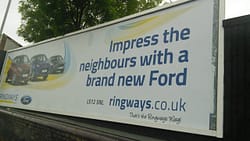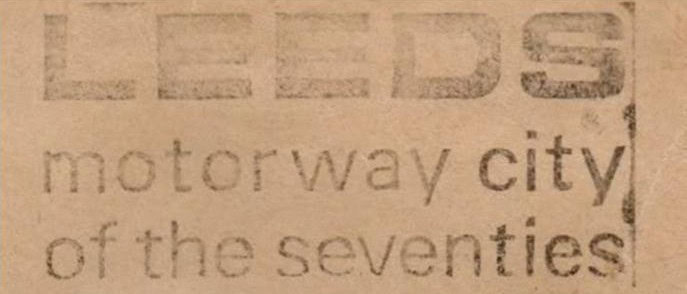
In the 1960s the most prominent psychiatrist in the world pioneered a new therapy.
He’d strap you safely onto a trolley before administering a mellow amount of psychogenic substances – this is where the phrase “clunk-click with every trip” actually originated. Then you were wheeled into your own special, private space and played a repetitively positive message that reinforced what a hell of a good time you were having.
Outcomes were positive on every measurable scale.
His peers were so impressed by the results of this process they voted him chair of The World Psychiatric Association. In fact he almost won a Nobel Prize for his efforts. Unaccountably he lost out to a guy who sawed off the top of people’s skulls and prodded about with a live wire just to see what memories were jogged.(Wilder Penfield… And I’m not kidding.)
In time people came to love their trollies. They couldn’t imagine feeling right without them. The trolley became a symbol of freedom and personal expression and patients fought to get into the trolley program. Life was better, faster, more productive and a lot more fun than in trolleyless times.
Most trolley devotees came to see the drug induced coma as a regrettable but insignificant inconvenience. Some complained about the straps. Many objected to not being able to glide along any corridor they liked; they had after all been selected for the trolley elite, why shouldn’t they go wherever the trolley whim led? There were protests when a wing was opened where trolley access was limited and the other patients could wander around freely; hospitals were built for trolleys, we can’t be an efficient, vibrant, profitable patient attracting hospital if we don’t make it easy for trolleys to whiz freely between consultations…
Dr. Ewen Cameron, President of the World Psychiatric Association, called his technique “Psychic Driving”.
There’s a very bad film about it too, The Sleep Room.
He got the idea for it when researching the KGB’s successful therapeutic intervention after the 1956 Hungarian uprising. Later the CIA picked it up and used Cameron’s technique when they were busy making Central America safe for democracy. Dr Cameron’s “psychic driving” was the lynchpin of MK ULTRA, which as any conspiracy nut will tell you, is behind everything from the Kennedy Assassination to Prince’s recent blood sacrifice (died in an elevator on the Queen’s birthday!… can almost smell the lizard breath on that one.)
I’ve often wondered if Dr Cameron didn’t moonlight as a town planner when his stellar psychiatric career had gone as far as it could go.
How else do you explain Leeds, Motorway City of the ‘70s?

Surely it’s an MK ULTRA subproject psychological experiment? “Project Gyratory”, perhaps?
You just have to look at the faces of drivers in rush hour.
Look how wide the corridors are in the madhouse that is the Leeds transport system
How neatly we store our trolleys
And the way people not on the trolley program are punished for not conforming…
If this stuff wasn’t designed by some black opps field agent who’d spent the previous 20 years undermining peasant resistance in the jungles of Guatemala then obviously I am seriously deluded.
I need a sit down…









Not a psychiatric experiment but an expression of modernist libido – another view of Motorway city of the seventies.
What’s all this dodgy video and Cold War Era Psychiatry? are you trying to be Leeds’s answer to Adam Curtis? But seriously, building a trail of allusions from these sources to assert the madness of the Leeds road system is no way celebrate the city’s heroic failure to bring about “Autopia” through its culminating statement “Motorway City of the Seventies”.
Mercifully we still have available some monuments to what might have been.
Of course I would begin by rejecting any idea that road building is in anyway pathological or analogous to the maladies addressed by psychiatry rather it is better conceived of as the infrastructure of sexual ecstasy.
F.T. Marinetti got it right in The Founding and Manifesto of Futurism of 1909 when he wrote of a drive around Milan thus “We went up to the snorting beasts, to lay amorous hands on their torrid breasts. I stretched out on my car like a corpse on its bier but revived at once under the steering wheel …. raging madness swept us out of ourselves and drove us through the streets… I spun my car around with the frenzy of a dog trying to bite its tail, and there, suddenly, were two cyclists coming towards me shaking their fists … their stupid dilemma blocking my way – Damn! Ouch! … I stopped short and to my disgust rolled over into a ditch with my wheels in the air …. When I came up I felt the white-hot iron joy deliciously pass through my heart!”
This brief summary encapsulates the modernist aspiration for what the urban motoring experience might become when a suitable infrastructure was provided. This was to come about in practice in Europe with the building of the Autobahns in Germany and the Interstates of America and belatedly to Britain with the building of the Preston By-pass and the M1. Of course motorways literally came to town following the Buchanan report and the urban regeneration of the 1960’s.
Ignoring the romantic post-war nostalgia of Shell Guides to Britain we see the motoring experience re-emerging in avant-garde writings of Jack Kerouac and the poetry of Thom Gunn. On and on, then, into the popular music of Chuck Berry and Kraftwerk. Later, sadly this spirit was to metastasise into the popular television of Top Gear and Wheeler Dealers.
What then is not celebrate in Motorway City of the Seventies except to reflect that it took so long and remains so incomplete. Of course one could have got a sense of what might have been speeding excessively along the inner ring road through the Woodhouse Lane tunnel (see DCI Banks and Black Work) or hugging the tight turn along the Stanningley by-pass towards Bradford. Driving over the more recent Hunslet flyover gives another indication of the potential of urban motoring in the years before Leeds discovered the traffic light. Driving the M621 down the hill towards the city at night gives an immediate expectation of pleasures to follow. Likewise, the earlier Scott Hall Road delivers the driver from the suburbs of Moortown to the sheds of Sheepscar avoiding the intricacies of the guided bus way.Although all these give a sense of the possible ecstasy of urban motoring I’m not sure any really match the delightfully charged Aston Expressway, the Westway in London, the inner ring roads of Coventry or Newcastle, the Mancunian Way or Glasgow’s M8 or M77.
However, Leeds is not devoid of other attractions present and past – the majesty of the Woodhouse Lane car park and what was the stacking car park in Bond Court (where were the protests from the Civic Trust when this was turned into a boutique hotel). Likewise, one can get a pale sense of the last days of Detroit or Rayner Banham’s Los Angeles standing on the bridge on North Street looking out on the York road. The drive-in bank Natwest in Park Square was another moment in the growth of consumer culture to treasure.
Of course this being Leeds, Motorway City of the Seventies and predecessor plans for the city centre were never fully realised something we are bound to mourn in this era of reactionary new urbanism and the convivial city. What happened to the city centre sky walks of which only fragments remain; what happened to the plans to make a dual carriageway through Headlingley? Surely it was only a failure of nerve on behalf of the city council which failed to bring these heroics of urban design into being?
Fortunately, despite these failings Leeds remains full of roadscapes with which to pleasure oneself. The delights are endless if taken with sufficient speed: the bourgeois opulence of Wigton Lane; the safe suburbia of Easterly Road, Halton and Cross Gates Ring Road, the civic dreams of Seacroft North Parkway and Belle Isle Road and the urban edgelands of Gelderd Road and Dewsbury Road. To these can be added the ancillary roadside accessories of neon lit fillings stations (pick any favourite – so Ed Ruscha) and flatscape car parks. I rue the south bank renewal for what will be the loss of the Tetley parking area – so reminiscent of downtown Houston.
Anyway Phil give up this whingeing and walking, get into a car, crank up the V8 and smell that warm leatherette as urban world rushes by.
But John, I don’t possess a license.
Actually I think all your examples above substantiate my thesis that the motorway system is one vast trauma-based mind control experiment…
I wrote this after a friend had turned up a bit frazzled after a very short commute. He said he couldn’t even remember how he’d got to where he was going, just drove along in a kind of daze and only jolted awake as he slammed the car door. Why didn’t you walk? I asked him. He said he enjoyed driving. I asked him when was the last time he’d actually driven anywhere with pleasure (your automobilibido). He admitted he couldn’t quite place any time, “but I bought the car because I love to drive…”
Psychic driving, or what!
Ha Ha ha no license – what does this say about your openness to the passions of the senses.
I didn’t say you had to be behind the wheel that “guillotine blade that threatened my stomach” as Marinetti described it. Just riding along in an automobile would be enough if you are in the right hands and the right car.
Of course you might be right that today motoring has become dominated by “Mind control” as in a state of paranoia one looks around for automated number plate recognition cameras (we have one of the densest networks of theses in the country in West Yorkshire), speed, traffic light and bus lane enforcement cameras, unmarked police vehicles, mobile speed cameras, environmental enforcement officers (formerly parking attendants) etc. etc.
Was it inevitably going to turn out like this or was Motorway City of the Seventies a moment when another motoring imaginary was possible??